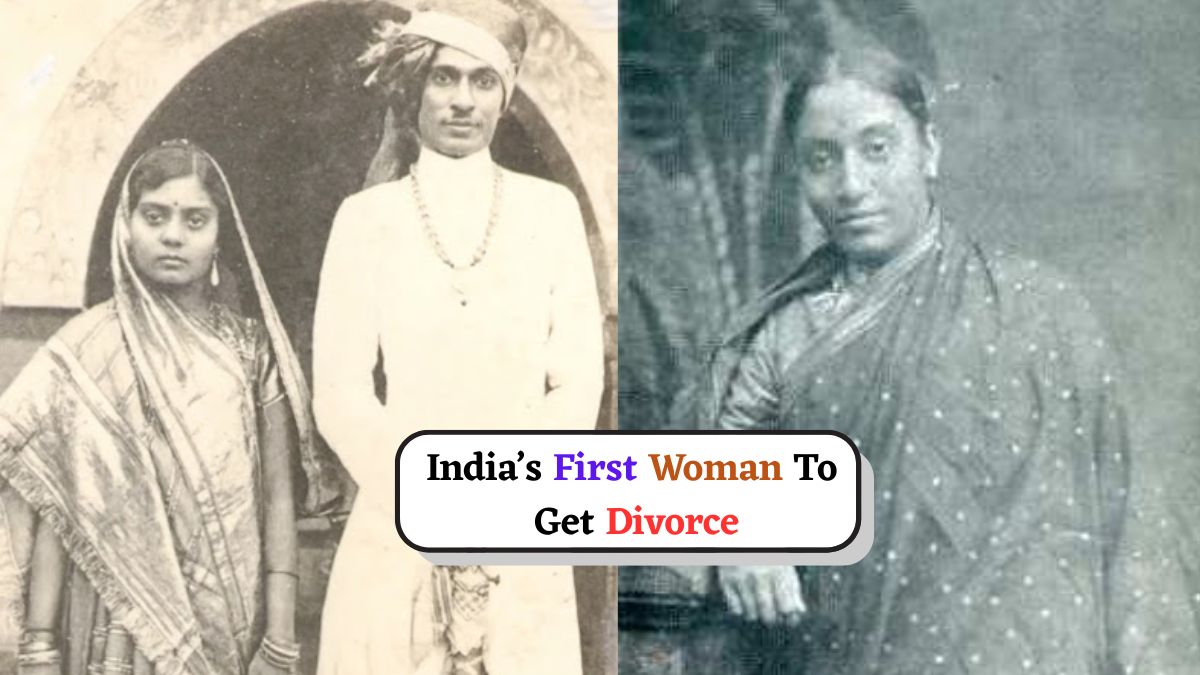- By Aditi Priya Singh
- Thu, 21 Aug 2025 05:19 PM (IST)
- Source:JND
India's First Woman to Take Divorce: In the early 19th century, India was a deeply traditional society, and women were often denied the freedom to make their own decisions. The concept of women's independence was uncommon and even frowned upon in many societies, as social reforms were still in their infancy. It took a great deal of bravery to defy social conventions at that time. It meant being criticised, shunned and judged by practically everyone, including neighbours, family and even the law.
Marriage, which was seen as sacred and unbreakable, frequently turned into a cage for women who suffered in silence. In a time when women had almost no rights, one brave woman dared to challenge the entire system by getting a divorce. Rukhmabai was the first Indian Hindu woman to file for divorce. But that is only a small part of her story. Her courageous decision challenged the foundations of Indian society and law. She fought not only for herself but also for countless women who were voiceless and forced into child marriages. Her tale serves as a powerful reminder that one person’s courage can change the world.
Let’s take a look at Rukhmabai’s life journey, from birth to child marriage to becoming the first woman to get a divorce legally and how she inspired later in her life as a doctor;
Who Was the First Indian Woman to Get a Divorce?
-1755776561105.jpg) Rukhmabai Raut's original picture (image: Indianliberals.in)
Rukhmabai Raut's original picture (image: Indianliberals.in)
The first Indian woman to file for divorce was Rukhmabai Raut. In the 19th century, when women's rights were almost non-existent in India, she became a trailblazer. Not only this, but she was also the second female doctor in India to practice. However, most people only know her from her legal battle.
Rukhmabai was born in Mumbai in the year 1864. Her mother remarried renowned physician and social reformer Dr. Sakharam Arjun following the death of her father. He was a fervent advocate for women's education, and as a result, Rukhmabai was given a top-notch education, something that was extremely uncommon for girls in that era.
ALSO READ: Which Planet Is So Big That All Other Planets Could Fit Inside It?
The Background of Her Struggle
-1755776232387.jpg) Rukhmabai with her husband (Image: Youtube)
Rukhmabai with her husband (Image: Youtube)
That time, child marriage was very common s Rukhmabai was married at the age of 11 to a 19-year-old Dadaji Bhikaji, who was her stepfather’s cousin. After they were married, he did not live with her for a long time. Her stepfather supported her decision to pursue her education at that time. Twelve years later, her husband, Dadaji, however, insisted that she leave her family and move in with him in 1884. But Rukhmabai refused.
She didn't want to live with a man whom she hardly knew and who hadn't pursued further education because she felt they had nothing in common. For a woman in that era, this was an extremely daring and startling move. Her husband took her to court after she refused to return to him as his wife.
The Legal Battle and Queen Victoria's Interruption
Rukhmabai’s husband took her to the Bombay High Court. In the first court ruling, the judge stated that he could not force a woman to love her husband against her will. However, the decision was overturned in a higher court, and the court gave her two choices: either live with him or spend six months in prison, and she chose prison. The case was a sensation and got a lot of public attention, sparking an international debate on child marriage and women’s rights.
She then wrote an emotional letter to the British Empress of India, Queen Victoria. She explained her challenging situation and asked the Queen to step in and change the Hindu law. After hearing the case, Queen Victoria intervened and prevented Rukhmabai from being imprisoned by the court.
Huge Victory For Rukhmabai
-1755776571562.jpg) First indian woman to get a divorce (Image: X/@aintgd)
First indian woman to get a divorce (Image: X/@aintgd)
This was a huge victory for Rukhmabai and demonstrated the strength of one person's courage. A settlement was then negotiated. The marriage was formally terminated when Dadaji consented to cede his rights to her in return for a sum of money. Because of her courageous stance, the Age of Consent Act of 1891 was passed, making it unlawful for men to engage in sexual activity with girls younger than twelve.
ALSO READ: Did You Know About 'Sex of Paris'? Why Place Dauphine Earned Its Playful Nickname
Rukhmabai's Legacy Continues After Getting a Divorce
Rukhmabai did not stop there after. She travelled to Britain to pursue a medical degree and went back to India to pursue a career as a doctor, treating women in Surat and other cities' hospitals. She devoted her life to promoting women's rights and helping others. The legacy of Rukhmabai Raut is one of unwavering bravery. Her story serves as a reminder that even in situations where the odds are stacked against you, standing up for what is right can have a significant impact not only on you but also on future generations. The strength of a woman who dared to hope for a better future is exemplified by her life.
So, what we learnt from this story is that we can change the world by changing our lives and fighting for our rights. What are your rights as a woman? You must think about it.
